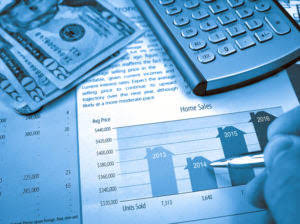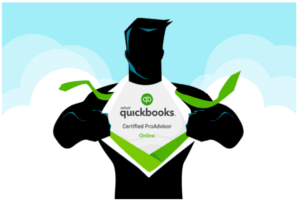- October 5, 2021
- Posted by: Visa Imigration
- Category: Bookkeeping

Senior executives also serve the critical functions of role-modeling a culture of collaboration and of making sure junior leaders take ownership of the delegated decisions. In this article, we’ll describe how to vary https://www.bookstime.com/ your decision-making methods according to the circumstances. However, settling on the best course of action is often easier said than done. When instinct and reasoning alone aren’t enough to pinpoint the best decision out of your available options, it can often be helpful to utilize a decision-making model. By incorporating input from various stakeholders, collaborative decision-making frameworks aim to leverage the collective intelligence of a group. Effective communication and facilitation are key components of successful collaborative decision-making processes.
Give managers the tools they need to drive performance
Incorporating these strategies and frameworks into your leadership practices will enable you to make informed, confident, decision making framework and impactful decisions that fuel long-term success. In today’s dynamic business environment, mastering comprehensive decision frameworks is crucial for aspiring leaders who strive to align their choices with organizational goals. By understanding various decision-making models and utilizing the right tools, leaders can enhance their strategic planning and drive effective decision-making within their organizations. Implementing a decision-making framework can greatly improve the quality and effectiveness of decision-making processes.

Establish Your Approach
Using a structured decision making framework can help overcome common challenges in decision making, such as information overload, analysis paralysis, and cognitive biases. By providing a clear and organized approach, these frameworks enable teams to make more confident and effective decisions. This guide explores such powerful decision making frameworks designed to help you make better decisions.
Identify alternatives
Using the framework, we get a list of tradeoffs and can make a decision knowing what things we can or can’t compromise. When applied to a business-related area, a decision-maker sees if all risks of the chosen option can be mitigated and at what costs. The framework is the result of our constant search for a universal tool to collect, analyze, and structure complex contexts of any subject. Please note, this decision-making framework doesn’t help you single out one option but rather helps deep dive into the context of a problem so that you can make a carefully weighed decision. This form of coaching can equip and empower you to make better decisions with more confidence.
- It involves a step-by-step approach that includes identifying the problem, generating alternatives, evaluating and comparing the alternatives, making a choice, and implementing the decision.
- While both are valid, decision-making based on internal evidence and observations is typically easier to implement and effective, making it one of the pillars of the widely used six sigma model.
- One such model that found widespread use was the analytical hierarchy process, which allowed organizations to rank alternative choices in terms of how well they fulfilled a set of predefined conditions.
- You need to handle the processes and dynamics with a tight fist to keep people focused on the problem at hand and to maintain options below the line of the absurd.
- Looker Studio (formerly known as Google Data Studio) is a tool that converts data into clear, detailed charts, graphs, and maps.
Optimizing team resources

For aspiring leaders, understanding decision frameworks is a cornerstone of effective leadership. Decision frameworks are structured approaches that guide leaders in making informed choices by providing a clear methodology for evaluating options and outcomes. These frameworks are essential tools for those who wish to enhance their strategic planning capabilities, foster continuous learning, and boost their confidence in the decision-making process. Throughout this guide, we’ve explored the importance of decision frameworks, detailed key decision-making models, and provided actionable insights and tools to aid leaders in navigating complex decisions.
- Decision makers also agree, before leaving a meeting where a decision has been made, how they will track project success, and they set a follow-up date to review progress against expectations.
- These models act as a roadmap when presented with a certain problem type, and you can choose the best approach for that issue.
- Unlike the rational framework, intuitive decision-making relies on gut instincts and past experiences.
- Doing so can help ensure everyone understands how they contribute to problem-solving and agrees on how a solution will be reached.
- These frameworks are essential tools for those who wish to enhance their strategic planning capabilities, foster continuous learning, and boost their confidence in the decision-making process.
- Out of all the skills that set apart the top-tier of project managers, leaders, and innovators, decision-making has the biggest impact.
Related Tools and Resources

The value at stake for delegated decisions is in the multiplier effect they can have because of the frequency of their occurrence across the organization. But when you’re faced with an irreversible choice, it’s time to bust out the big guns. The depth of coverage makes it a great tool for capturing company knowledge and sharing lessons learned. You’ll have a clear history of what you were thinking and why you made the decision you did.
How to decide between your current job and a new opportunity
- Anytime you are faced with an important decision, it is essential not to let biases get in your way.
- If signs of congestion or dysfunction appear, leaders should reexamine the decision-making structure to make sure alignment, processes, and accountability are optimally arranged.
- It’s clear that fixing the bug right away is the immediate decision to make.
- However, new technologies, including AI-powered tools, may help business leaders make decisions based more on solid data and less on guesswork and intuition.
With the increasing availability of computer processing technology in the 70s and beyond, it became possible to further refine and adapt decision-making models. As such, more organizations began seeing themselves less QuickBooks as a set of isolated elements and more as a complex system of interrelated elements. Additional factors, such as employee skills, environmental context, and computational resources were used to more closely calculate the potential consequences of different choices in the presence of uncertainty. As a result, mathematical models of the decision-making process became more popular. The rational decision making model is ideal for solving complex problems that require a make-or-break decision.
- Collaborative platforms, including tools like Slack, Microsoft Teams, and Asana, facilitate effective decision-making for leaders by fostering communication, coordination, and information sharing among team members.
- As the project manager or product owner, you’ll be responsible for making calls that impact your team, company, and industry.
- The rational model is ideal for strategic decisions such as market entry strategies, product launches, and major investments where a thorough analysis of costs, benefits, and risks is crucial.
- You may have a lot of raw data on your customers or past sales, but you need to analyze this information correctly to spot trends that will help you make decisions.
- Using this decision-making framework, you need to consider each option and list their Benefits, Costs, and Mitigations.
Then, with all the data and opinions at their disposal, the Approver makes the call, and the Informed are told the verdict. Decisions have emotional and cultural impacts as much as technical and business ones. First, when your choice is ‘irreversible’ (or reversing it will introduce significant risks).
Company

Despite innovations such as data mining and data warehousing, organizations realized they lacked an efficient and systemic way to manage and organize their data. Experimentation with different management systems began to take place, with “transparency” becoming a particularly valued characteristic for organizations seeking to make better decisions. As the information age began in earnest in the 80s, computational power became integral to gaining a competitive edge. In particular, computers and technology were put to greater use in order to understand the way tasks are performed under uncertainty.




